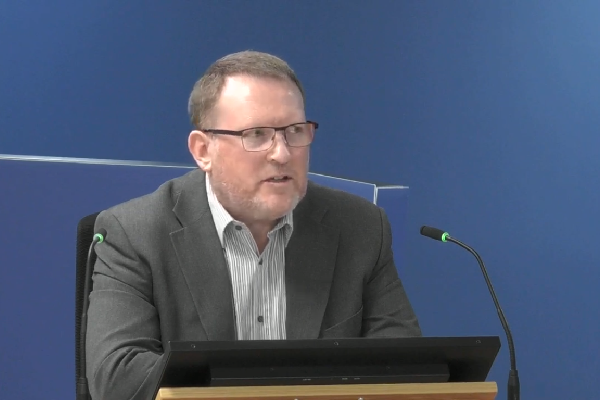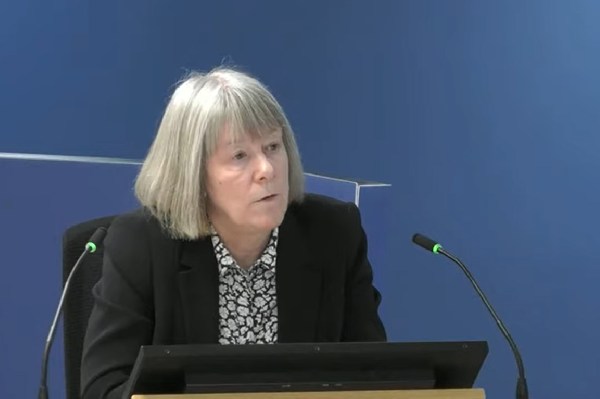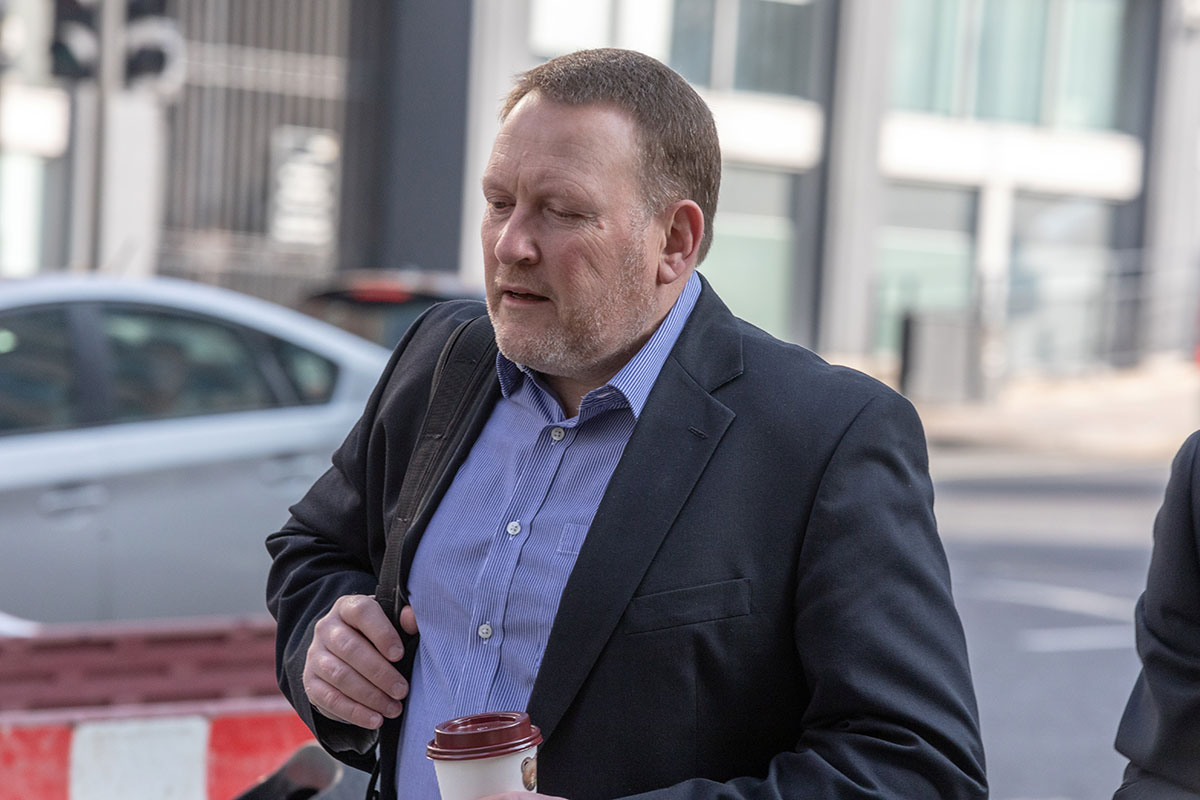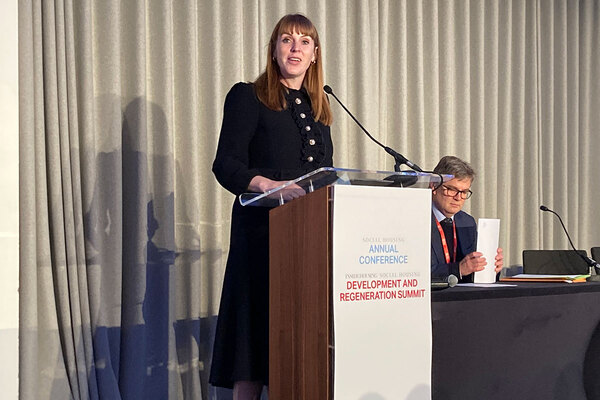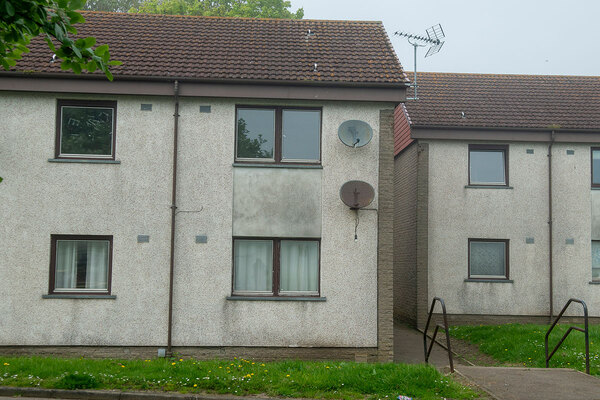Official denies ‘excisions’ from cladding fire report were made to hide conflict with government policy
A senior government official has denied that the “excision” of critical passages from a cladding fire report he worked on were made to avoid a conflict with the department’s decision not to raise fire standards.
Brian Martin, the civil servant who was responsible for official guidance on fire safety in buildings in the years before the Grenfell Tower fire, began his lengthy cross-examination at the inquiry into the fire today.
Mr Martin, who the inquiry heard was the person in the department “to whom others would turn” for answers to questions about fire safety in the years before Grenfell, holds a pivotal position in the failure to amend or strengthen guidance before the fire.
Today, he was asked about the failure to tighten a “dangerous and misleading” fire safety standard for cladding panels, Class 0, following a fire in 1999.
At the time, Mr Martin was employed by the Building Research Establishment (BRE), but was also spending half his time on secondment at the government department responsible for building regulations, as part of the BRE’s contract to assist with a review of fire safety guidance.
The inquiry heard that following a large cladding fire at Garnock Court in Irvine, Scotland in June 1999, Mr Martin was part of a team of researchers from the BRE sent to investigate the cause of the blaze.
In September 1999, Mr Martin co-authored a report for North Ayrshire Council, which made several references to the ‘Class 0’ standard.
This was the required standard for glass-reinforced plastic panels that had been installed beneath windows at the tower and had spread fire up the building.
The report also said that when the building was remediated, “we suggest non-combustible materials are chosen wherever possible”.
Asked what he remembered about the material used on Garnock Court, Mr Martin said it was “very low tech” and “obviously something that was likely to become involved in a fire and result in fire spread”. He compared it to the material a “boy scout might use to make a canoe”.
Asked what he learned from his investigations of the fire, he said: “Don’t use combustible cladding I suppose, in very simple terms.”
In December 1999, a group of MPs investigating the risk from external cladding fires issued a report to the department which advised replacing the Class 0 standard with a requirement that cladding systems either be “entirely non-combustible” or pass a large-scale test that had been devised by the BRE.
Their report said: “We do not believe that it should take a serious fire in which many people are killed before all reasonable steps are taken towards minimising the risks.”
However, in April 2000, when Approved Document B was revised, the government elected not to follow the recommendation and instead retain the Class 0 standard in the guidance and introduce the new BRE test as an alternative route to compliance.
Asked why this decision was made, Mr Martin said: “One of the problems with an absolute requirement for non-combustibility is you get problems with… decorative finishes and other components of the wall. If you adopted a near enough absolute requirement for non-combustibility, it’s probably impracticable and unduly onerous. You’d be banning things that are perfectly safe.”

Mr Martin added that requiring large-scale testing for all systems would be “logistically and financially challenging”. “They’re very expensive. They’re very difficult to set up and so are going to be unpopular with industry,” he added.
In August 2000, the BRE submitted a further report on Garnock Court to the government.
Several passages were exactly the same as those in the version previously delivered to North Ayrshire, but the references to Class 0 had been removed, as had the recommendation that the building be repaired with non-combustible materials.
“Can you help us, do you know anything about this discrepancy between these two reports?” asked Richard Millett QC, lead counsel to the inquiry.
“No,” replied Mr Martin.
“Was the reference to Class 0 removed at the request of the department?” asked Mr Millett.
“Not that I’m aware of,” replied Mr Martin.
“If there was something that the government didn’t want to appear in the report, you were in the best position to know what that was,” said Mr Millett.
“If that ever arose, I guess I would have known. It’s not something I ever experienced,” Mr Martin said.
Asked if he would have “also have been in the position to ensure… that it didn’t appear, because you were on the drafting side”, Mr Martin said this would have required him to “tell his colleagues to take something out”, which they would “not have accepted”.
“Do you accept that the only explanation to those excisions is that somebody was told to excise them in order to make the BRE’s report to government in 2000… consistent with the government’s earlier decision to reject the select committee’s recommendation?” asked Mr Millett.
“I can’t believe anyone would have said that. Just thinking of all the people involved, I can’t imagine any of them would have done that,” Mr Martin replied.
Asked repeatedly if he could provide any alternative explanation for the changes to the document, Mr Martin said he could not. “It does seem odd. I can’t think of a good reason for it,” he said.
Who is Brian Martin?
Brian Martin had been responsible for official building regulations guidance on fire safety, contained in Approved Document B, for almost 18 years by the time of the Grenfell Tower fire.
He was the person within the department “to whom others would turn” to answer questions on this topic.
When she gave evidence, Melanie Dawes, the former permanent secretary at the Department for Communities and Local Government (DCLG), was asked if it was “pretty dangerous” to have the responsibility for all this “falling on one man’s shoulders”.
“Yes, I do. I think it ’s a single point of failure that had been allowed to be created,” she said. Asked to explain how this happened, she said it reflected budget cuts, the localism agenda and the fact that “regulation was not seen as something valuable, it was seen as something that created costs and burdens”.
Mr Martin has no formal fire safety or engineering qualifications. His qualifications amounted to a diploma in building control surveying obtained around 25 years ago.
He had trained as a joiner and carpenter after leaving school, before rising to site manager. Asked if this gave him any fire safety experience, he said: “I would have installed some fire doors.”
Aged 22, he became a building control surveyor, working first for Westminster, Tower Hamlets and Dartford councils, and did review fire strategies for some complex projects, including the Bluewater shopping centre in Kent.
In 1999, he applied for a job at the Building Research Establishment (BRE), the former national testing centre which had recently been privatised. The BRE had a contract to support the government with a review of Approved Document B and within weeks of starting, Mr Martin was seconded to the department’s offices for two to three days a week to support this work.
Mr Martin would go on to take a permanent role at the department in 2008 as ‘principal construction professional’. This saw him take on primary responsibility for Approved Document B. The inquiry has already heard about many critical warnings regarding the looming danger of a cladding fire which were issued to him in this role.
In November 2017, five months after the Grenfell fire, he was promoted to head of technical policy, leading the team of specialists who oversaw changes to building regulations and guidance.
However, in September last year he moved to the planning directorate. He said he had been “encouraged” to find a new role given “the challenges associated with my attendance at the inquiry and the attention I was getting in the press”.
The Class 0 standard was ultimately not removed from guidance until December 2018, a year and a half after the Grenfell Tower fire, which killed 72 people.
The cladding used on the exterior of the tower was sold with a certificate which suggested it was Class 0.
“Why did it take to Grenfell tower fire to provoke a change, which had been flagged clearly by the select committee in 1999?” asked Mr Millett.
Mr Martin explained that his team had not seen the need to revisit the standard following the decision in 2000. “I think we just considered it as water under the bridge. It sounds really glib. And I'm sorry but those were decisions that had been made. And so unless there was a driver to revisit them it didn't it didn't come up,” he said.
Earlier, he had been asked of his understanding of the standard, which was designed for the linings of internal walls and ceilings, not the cladding panels used on the exterior of a building.
“Did it ever occur to you at any time whether at the BRE or at the department or both that [Class 0] was an inapposite classification for external surfaces of walls above 18 metres given [its] origins?” asked Mr Millett.
“I don't think I'd considered that before Grenfell Tower,” replied Mr Martin.
When she gave evidence last month, Dr Debbie Smith, former managing director of the BRE, told the inquiry that following this fire the government would have been “aware that small-scale fire tests were an inadequate basis” for controlling fire in a cladding system.
Asked if he was aware of this thinking, Mr Martin said: “From scientists at the BRE, yes.”
“Can you help us to understand, therefore, why reliance on small-scale test data… remained an available means to try to predict and control the fire in the external tanning of a high-rise building until 2018?” asked Mr Millett.
Mr Martin said that retaining small-scale testing “was a decision that was made by the department and the government of the day”.
Asked why he did not take the opportunity “to advise your superiors [in government] that it was dangerous, misleading and needed to be dumped”, Mr Martin said: “If you ask a fire scientist, ‘what's the best way to determine how something's going to behave?’ They'll say, ‘the biggest the largest-scale test you can possibly do’.
“But a regulator is trying to balance that with what's reasonable and proportionate to impose on the industry.”
In the afternoon, the inquiry asked Mr Martin about a period in the early 2000s when the need to harmonise UK standards with Europe meant Class 0 should have been ditched in favour of new European tests.
He was asked about research, previously revealed by the inquiry, which warned that selecting a higher fire classification to replace Class 0 “would severely restrict the market choice in terms of materials for specifiers and clients”.
The report emphasised that foil-faced insulation products could obtain Class 0, but would not always reach the European standards.
“Cutting to the point, what was wrong with discriminating against a lower standard of fire safety in order to achieve higher standards of fire safety?” asked Mr Millett.
“There's nothing wrong with that, if that's what you're setting out to do,” replied Mr Martin, adding that the department was seeking to avoid “market distortion” when it changed to the European standards.
Mr Martin will continue giving evidence next week. The first topic he will be asked about on Monday will be a series of cladding tests in 2001, including the catastrophic failure of one containing the material later used on Grenfell Tower.
Sign up for our weekly Grenfell Inquiry newsletter
Each week we send out a newsletter rounding up the key news from the Grenfell Inquiry, along with the headlines from the week
Already have an account? Click here to manage your newsletters
